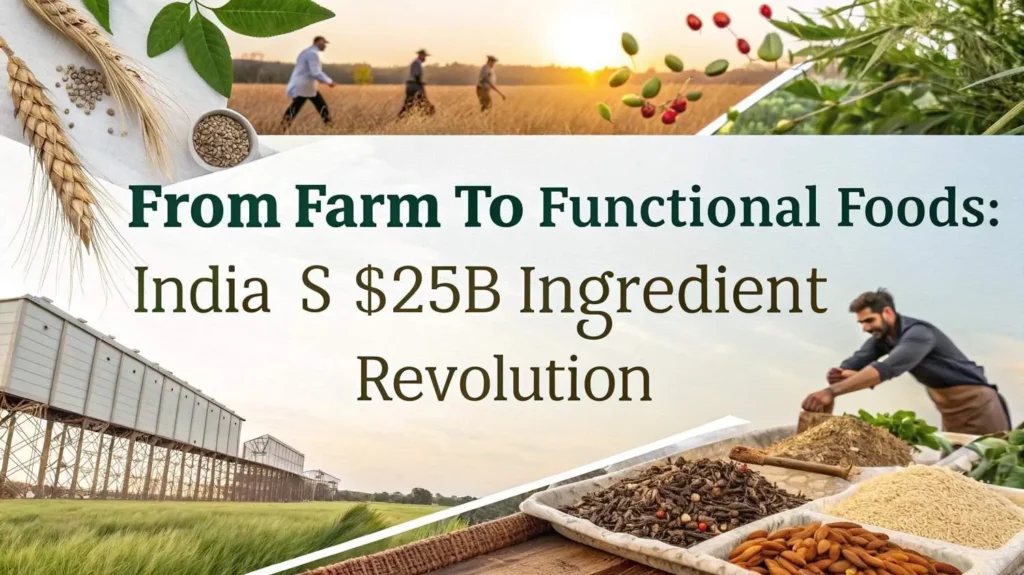Furfural is an essential chemical intermediate widely used in the production of resins, solvents, plastics, and agrochemicals. Derived from agricultural biomass, it holds great industrial significance due to its eco-friendly origin and versatile applications. One of the most promising and sustainable sources of furfural is lignocellulosic agricultural residues like sugarcane bagasse and corncobs. In recent years, furfural production has attracted attention not only because of its renewable feedstocks but also due to increasing global demand in chemical manufacturing and green chemistry initiatives.
Exploring Furfural Production from Sugarcane and Corncobs
Furfural production involves converting pentosan-rich biomass, such as hemicellulose found in corncobs and sugarcane bagasse, into furfural via acid hydrolysis. These agricultural by-products are rich in pentosans (primarily xylan), which, when treated with diluted mineral acids under controlled heating, release pentose sugars. These sugars then undergo dehydration to yield furfural.
The use of sugarcane and corncobs in furfural production is especially significant in agricultural economies like India, Brazil, and China where these raw materials are abundant. These residues often go to waste or are burned, contributing to pollution. Utilizing them for chemical manufacturing helps address both waste management and sustainable development goals.
See Also: Emerging Opportunities in the Fertilizer Market
Understanding the Raw Materials
Sugarcane Bagasse
Sugarcane bagasse is the fibrous residue left after extracting juice from sugarcane. It is composed of approximately 45–55% cellulose, 20–25% hemicellulose, and 18–24% lignin. The hemicellulose content makes it an excellent candidate for furfural production. Given the scale of sugar production in countries like India, Brazil, and Thailand, bagasse is available in large quantities, making it a low-cost and sustainable feedstock.
Corncobs
Corncobs are one of the richest sources of hemicellulose, containing around 30–35% pentosans. Unlike sugarcane bagasse, corncobs are less fibrous and more homogeneous in composition. This quality enhances the efficiency of furfural yield per ton of biomass. Countries like the USA, China, and parts of Eastern Europe, with massive corn production, can benefit significantly from using corncobs in furfural production processes.
Furfural Production Process
The commercial process for furfural production generally involves the following steps:
-
Feedstock Preparation:
The corncobs or bagasse are cleaned, dried, and ground into smaller particles to increase surface area. This allows for better penetration of the acid catalyst during hydrolysis. -
Acid Hydrolysis:
The biomass is mixed with diluted mineral acid, typically sulfuric acid (H?SO?), and heated under pressure. The pentosans in the hemicellulose hydrolyze to form pentose sugars like xylose. -
Dehydration to Furfural:
These sugars are then dehydrated in the presence of acid to form furfural. The reaction typically occurs in a continuous digester or batch reactor under high temperatures (160–200°C). -
Steam Distillation and Condensation:
As furfural forms, it is volatile and gets distilled along with steam. The vapors are condensed, and furfural is separated from water via decantation. -
Purification and Recovery:
Crude furfural may contain small impurities and water. It is further purified using distillation and chemical separation techniques to reach commercial-grade quality.
Efficiency and Yields
The furfural yield depends on several factors, including the type of biomass, pentosan content, reactor design, reaction time, acid concentration, and temperature. Corncobs typically yield around 8–12% furfural by weight, while sugarcane bagasse yields 5–8%. Advancements in catalytic systems and reactor designs are improving furfural yields and reducing environmental impact.
See Also: Production of Polypropylene (PP) and their Products
Environmental Benefits and Sustainability
Furfural production from biomass offers significant environmental benefits:
-
Waste Valorization: Agricultural waste that would otherwise be burned or discarded is converted into valuable chemicals.
-
Carbon Neutrality: Biomass-based furfural has a smaller carbon footprint than petroleum-based alternatives.
-
Biodegradability: Furfural and its derivatives are biodegradable, contributing to cleaner industrial outputs.
-
Resource Optimization: Enhances rural income by creating value chains around crop residues.
Sustainable furfural production also supports the circular economy model, where waste from one process becomes input for another.
Industrial Applications of Furfural
Furfural has wide-ranging applications in various industries:
-
Resins and Polymers: Furfural is used in the synthesis of furan resins, which are applied in foundry sand binders, coatings, and adhesives.
-
Solvents: It acts as a selective solvent in refining lubricants and extraction of dienes.
-
Agricultural Chemicals: Used as a raw material for manufacturing herbicides and pesticides.
-
Pharmaceutical Intermediates: Furfural serves as a precursor for several organic synthesis applications.
-
Biofuels: Its hydrogenated derivative, furfuryl alcohol, is being explored as a component in biofuel production.
Market Overview and Trends
The global furfural market is projected to grow steadily due to increasing demand for bio-based chemicals. Asia-Pacific dominates the furfural production landscape, with China being the largest producer and exporter. India is also emerging as a key player due to its vast agricultural residue base and low-cost labor.
Moreover, the shift towards green and sustainable chemistry is propelling investments in furfural research and production technologies. Biorefineries that process multiple products from the same biomass are gaining momentum, with furfural being one of the key value-added outputs.
Challenges in Furfural Production
Despite its potential, there are several challenges:
-
Corrosive Nature of Process: The use of acid and high temperature requires corrosion-resistant equipment, increasing capital costs.
-
Low Conversion Efficiency: Some sugars degrade during processing, reducing yield.
-
Waste Disposal: Acidic effluents require treatment before disposal.
-
Market Volatility: The furfural market is affected by fluctuations in agricultural output and competing demand for biomass.
These hurdles are being addressed through technological innovations such as solid acid catalysts, microwave-assisted hydrolysis, and integration of furfural production in sugar mills and corn processing units.
Scope for Entrepreneurs in India
India, with its vast sugarcane industry and growing corn cultivation, is an ideal location for furfural production ventures. Entrepreneurs can tap into:
-
Co-location Opportunities: Setting up furfural units near sugar mills or starch factories to reduce transport costs.
-
Government Support: Capital subsidies, biomass utilization incentives, and schemes under the Ministry of MSME.
-
Export Potential: Growing international demand can make furfural a high-margin export item.
-
Collaborations: Tie-ups with research institutions for pilot-scale operations and technology transfer.
Future Outlook
The future of furfural production lies in:
-
Process Optimization: Enhancing yield while reducing energy input.
-
Hybrid Technologies: Integrating biological and chemical conversion methods.
-
Green Catalysis: Use of enzymes or non-toxic solid acid catalysts for a cleaner process.
-
Product Diversification: Expanding into derivatives like furfuryl alcohol, tetrahydrofurfuryl alcohol, and bio-based solvents.
As the world transitions to a bioeconomy, furfural production from agricultural residues like sugarcane bagasse and corncobs is set to play a vital role. Its eco-friendly profile, wide applicability, and rural employment potential make it a strategic component of sustainable industrial development.
Conclusion
Furfural production from sugarcane and corncobs represents a perfect blend of environmental responsibility and economic opportunity. By transforming agricultural waste into a valuable industrial chemical, the process contributes to waste reduction, sustainable resource use, and the rural economy. With advances in production technology and increasing global demand for green chemicals, furfural production is poised for significant growth. Entrepreneurs, researchers, and policymakers must collaborate to scale this industry sustainably, ensuring both profitability and ecological balance.





